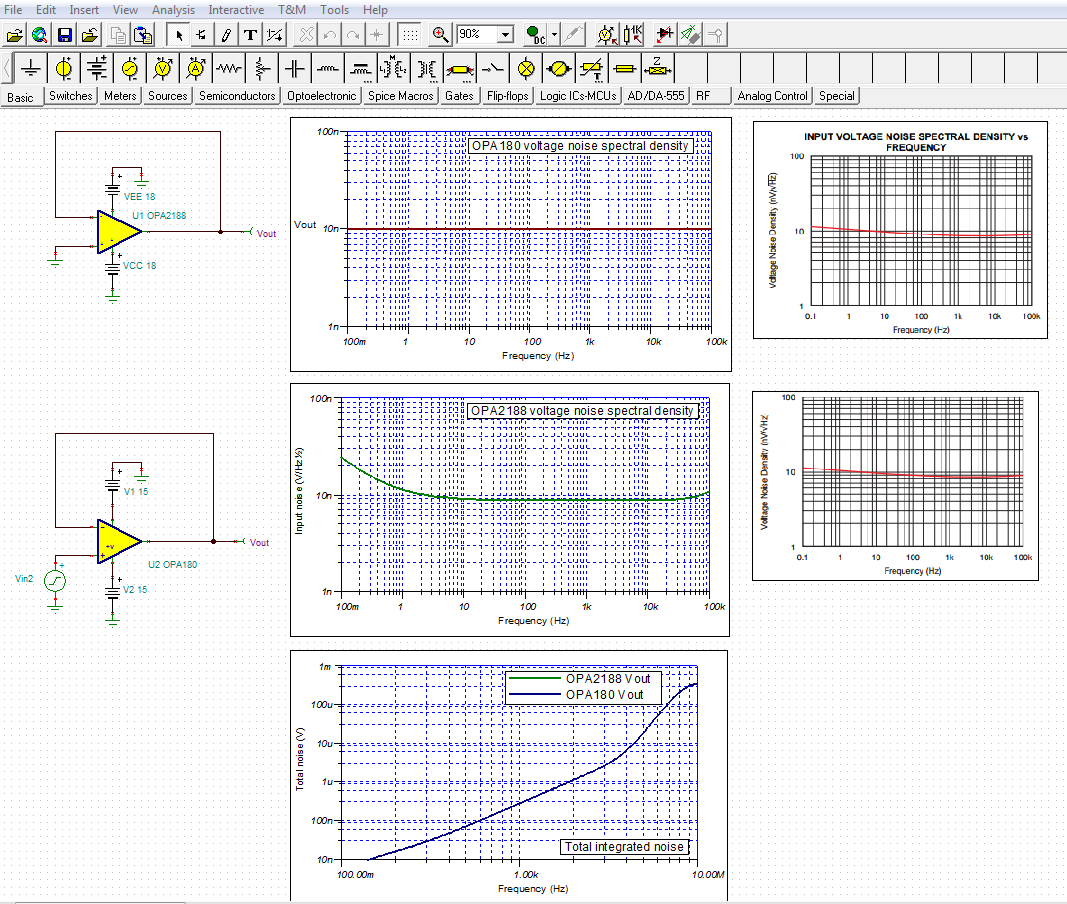Does anyone know if the OPA180 (or dual version OPA2180) is the same silicon as the OPA2188? If it is, I have noticed a marked difference in these two parts during noise simulation. The OPA180 displays the correct noise voltage characteristics as listed by the data sheet. However, the OPA2188 does not. If you test the noise voltage of the OPA2188 it appears to have 1/f noise like a normal OpAmp. Also, unlike the OPA180 where the noise decreases at high frequencies the OPA2188 noise increases at higher frequencies.
-
Ask a related question
What is a related question?A related question is a question created from another question. When the related question is created, it will be automatically linked to the original question.


